PAOC Spotlights
The Value of Community Engagement with Climate Science
Outreach by climate scientists helps develop a society equipped to address one of humanity's greatest challenges: climate change.
***
“What is that?!” a young boy exclaims, pointing to a projection of what could seem like an alien world. “That’s a daphnia from the Charles River, a planktonic crustacean,” explains Jon Lauderdale, a physical oceanographer and postdoc with the MIT’s Program in Atmospheres, Oceans and Climate (PAOC). Lauderdale, along with several Department of Earth, Atmospheric and Planetary Sciences (EAPS) professors, graduate students and postdocs, cluster around a microscope table at the MIT Museum for 2016’s Earth day. Behind them, posters of magnified plankton species are mounted on easels and moving images of chlorophyll changes illuminate a nearby screen. Lauderdale directs the boy to the microscope for closer inspection—life teeming in the water samples collected from the harbor, Jamaica Pond and the Charles River. “Oh, look, there’s a volvox!” Mick Follows, an EAPS professor studying biogeochemical cycles in the ocean, gestures to an orb of green algae floating across the screen, invoking images of an electric green tumbleweed. Interest builds, and a crowd of families, teens and children inch closer to learn more.
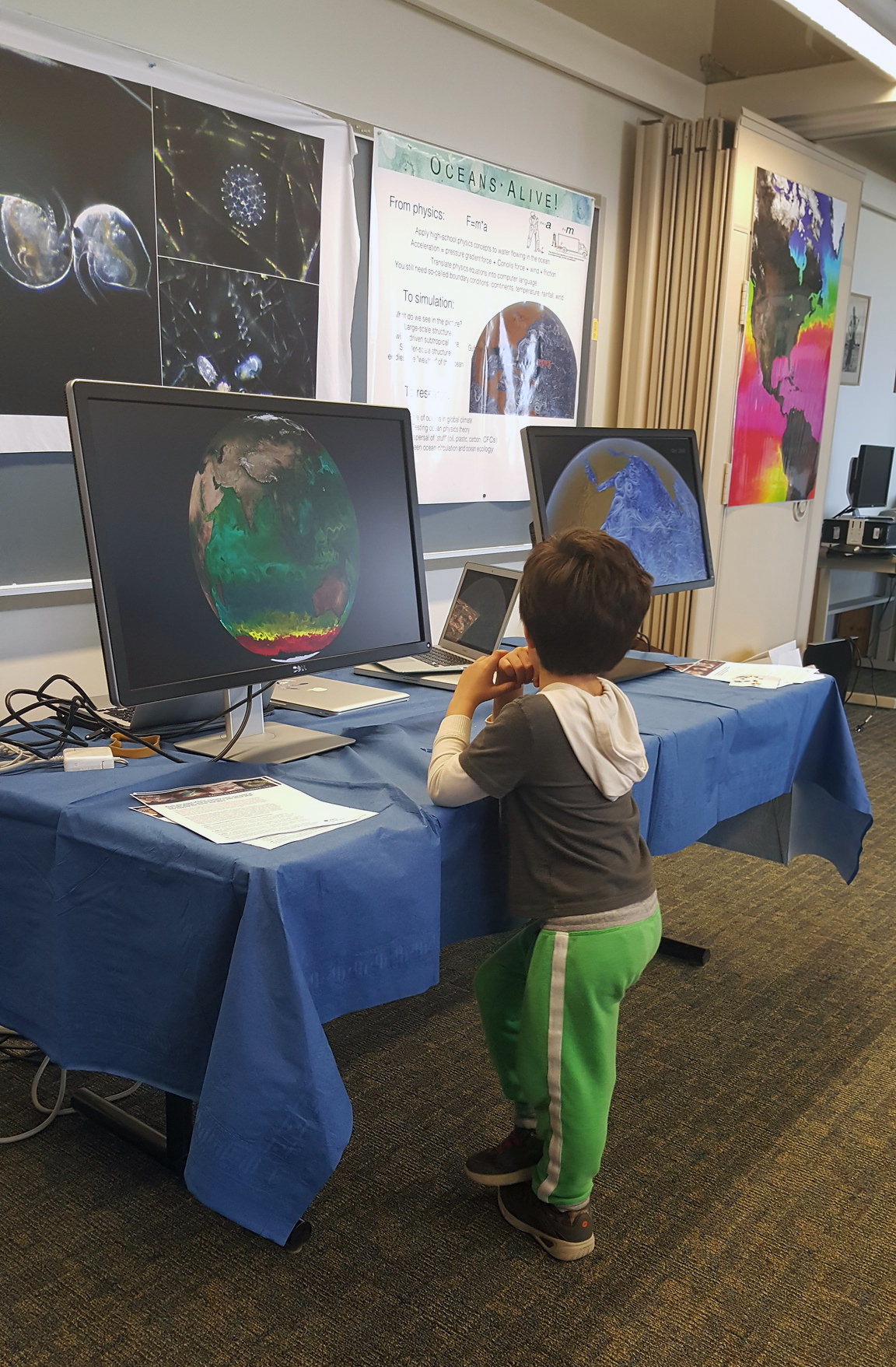 This Earth Day event marked the fourth year that Oceans at MIT and EAPS participated in the Cambridge Science Festival, which brought some of the world’s premiere scientists and thinkers together with the greater Boston community. The 10-day festival culminated with its main attraction, MIT’s Open House. Here, guests peeked “Under the Dome” at some of MIT’s ongoing research and interacted with group leaders directly. MIT’s EAPS and Oceans at MIT offered its own selection of games, illustrations and demonstrations exploring weather, oceans and climate science phenomena—engaging the public in issues that scientists feel are important and will only become even more so with time.
This Earth Day event marked the fourth year that Oceans at MIT and EAPS participated in the Cambridge Science Festival, which brought some of the world’s premiere scientists and thinkers together with the greater Boston community. The 10-day festival culminated with its main attraction, MIT’s Open House. Here, guests peeked “Under the Dome” at some of MIT’s ongoing research and interacted with group leaders directly. MIT’s EAPS and Oceans at MIT offered its own selection of games, illustrations and demonstrations exploring weather, oceans and climate science phenomena—engaging the public in issues that scientists feel are important and will only become even more so with time.
Science Festivals Play Strongly into Climate Science Outreach
Climate change is arguably one of the biggest challenges that humanity will ever face, and so public understanding of it is a fundamental element to understanding its effects and combating them. But unlike other areas of scientific study that are more tangible and/or have consequences that are more immediately felt like the field of medicine, climate science can seem abstract, multifaceted and circumstantial. Further complicating the situation, US proficiency in the sciences has been lagging, public education in climate science often incorrect and a hotly contested topic, and media coverage of climate science has dropped significantly in 2015, when stresses of its importance should have increased. “A community without a quality source of science information — packaged in a way that is accessible and relevant to most members of that community — is ill prepared to make careful decisions about costs, risks, benefits, and ethics.” It is for these reasons, among others, that scientists are devoting increasingly more time to science communications and public outreach. And while a multi-pronged approach is ideal, science festivals and outreach by the climate scientists themselves seem to make the biggest impact.
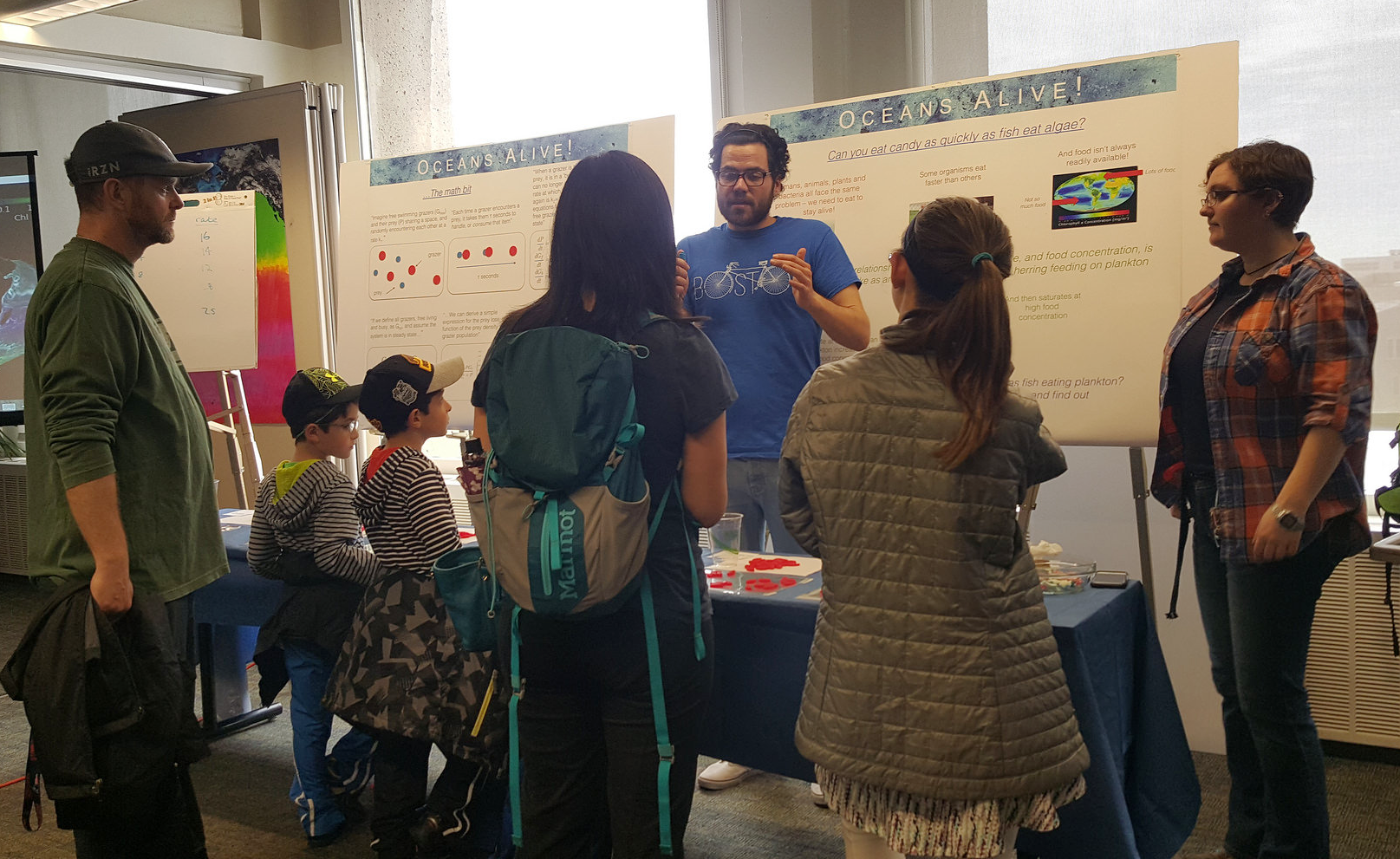
A three-year study of US science festivals including the one in Cambridge, Massachusetts yielded indications of positive outcomes. The survey found that attendees, “reported becoming more interested in science, learning something new about science, experiencing science learning as more fun and enjoyable, and feeling more connected to the science happening in their cities.” Additionally, there was a significant “increased interest in science” and many used the information learned at the festival as a jumping off point for further personal scientific investigation.
As Matt Shipman, science writer and PIO with North Carolina State University, points out in a post, science festivals provide added value to the community: disseminating information. They aren’t limited to “preaching to the converted” i.e. those who are already interested in science and so are likely to attend science events. Science festivals are designed to be inclusive, attracting a broad range of demographics and bringing in new ones. “These findings indicate that the festivals do make a difference. They make people more interested in science, regardless of what people thought before attending a festival.”
But it’s the interaction with scientists that makes the difference.
Personalizing Climate Science
Face-to-face communication with science educators and community members allows for a direct-to-consumer type of approach with increasing returns on investment as the number of scientist interactions increases. The same report found that, “attendees who intermingled with STEM practitioners at a festival had more fun, were more interested, and learned more than attendees who did not interact with a scientist.” Also, there were additional returns on the number of interactions with scientists, jumping from 40 percent—who stated an increased interest in science, but did not talk to a researcher—to over 70 percent for those who talked to three.
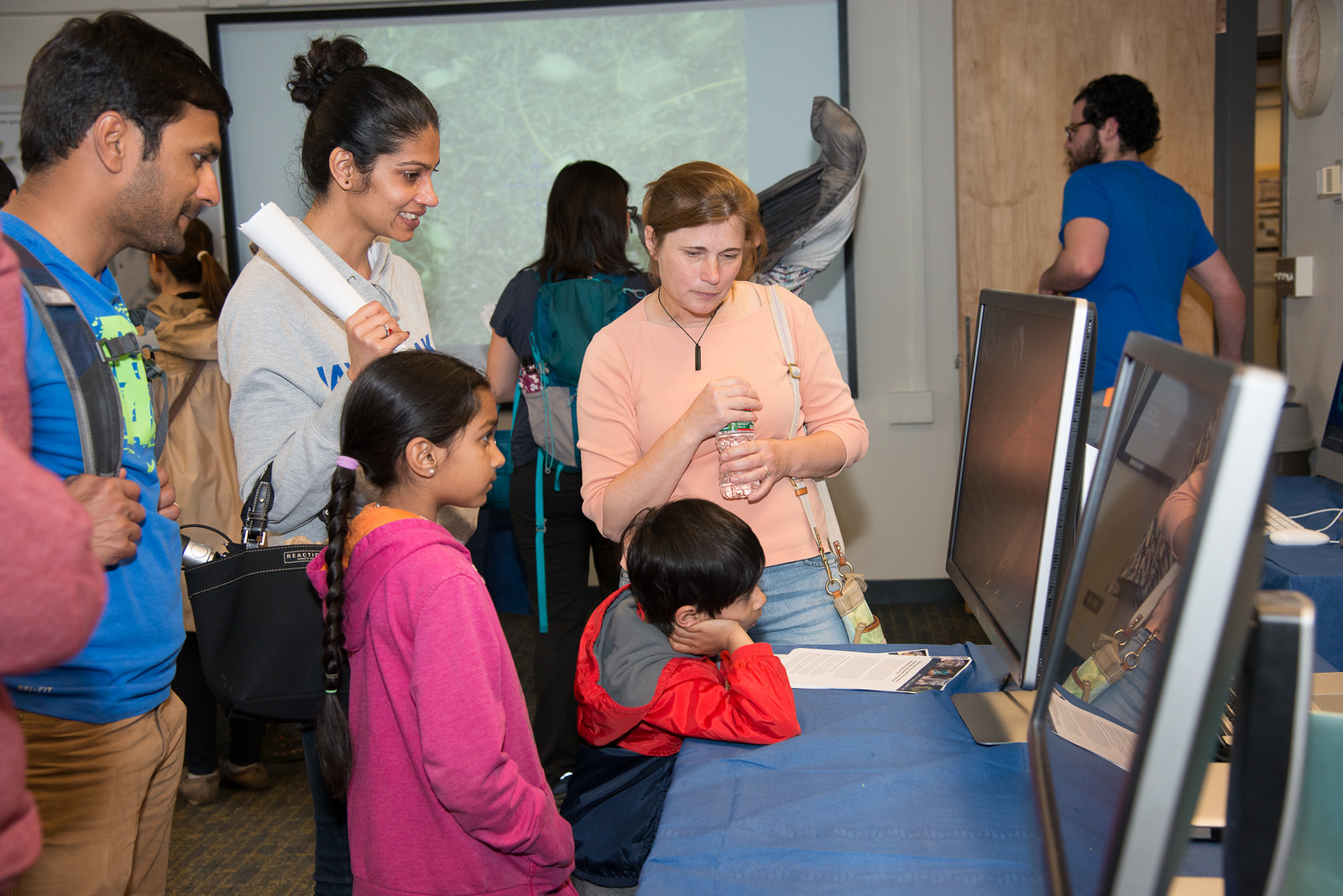
But demystifying climate science and making it accessible is more than the quantity of interactions; it’s the quality—early exposure to the reality of how climate science works. Scientists are people too, and great science findings don’t come without their own struggles. Studies have found that students’ interest in science drops off in middle and high school; this particularly holds for young girls. Part of this problem stems from an inability to relate to scientists, viewing them as innately talented while unable to see the scientific potential in themselves. These critical self-images contribute to disinterest in science and dissuade them from pursuing a scientific career. But a recent interventional study—designed to “confront students’ beliefs that scientific achievement reflects ability rather than effort by exposing students to stories of how accomplished scientists struggled and overcame challenges in their scientific endeavors”—illustrates that addressing the conflict can reframe students’ perception of what a scientist looks like and does. Science festivals can facilitate this internal dialog by providing a venue for an external one—communication with a local scientist mentor. Additionally, this can open students up to the possibility of investment in furthering their own science education.
Showcasing the complexities of ocean science can be difficult, but EAPS graduate student Deepa Rao along with some colleagues developed Oceans Alive! for MIT's Open House to distill some of issues that they address daily into games and demonstrations. In the wild, sea creatures may experience limited resources, like a lack of available prey. In one activity, using Swedish Fish, the group asked guests to “go fishing”—reaching for the treats with their eyes closed when prompted; each had a different number of candies available to them at any one time. The drill symbolized how hunting strategies and prey abundance can affect an organism’s success. Reflecting on the event, postdoc David Talmy was satisfied with the result. “Playing the game prompted people to think a little bit more about some of the practical applications of our research, [and] I could communicate in a fairly simple way some of the mathematical elements of what we do, which I really enjoy. It can be quite difficult to communicate that. But it was the guests’ reactions that left an impression. “People really started to ask us about the mechanisms at play and how you can apply that to different situations. I saw the look of recognition in people’s faces as they were playing it, which was really satisfying.”
And for climate scientists new to informal outreach like science festivals, particularly graduate students and postdocs, reactions such as these provide positive feedback. In the same study, of those participating scientists polled, 75 percent reported “increased confidence interacting with public audiences,” encouraging future involvement.
Preserving Basic Research
These affirmations also help to serve a larger purpose: convincing the public that science matters, which in turn, keeps funds flowing and the practice of science alive. As Scientific American states, “Put another way, the era of outreach being optional for scientists is now over.” Governmental sources subsidize a substantial portion of US research, but recent budgetary cuts threaten its continued support. Additionally, historical pushback from legislators on what they call “silly” studies has helped drive unfounded public opinion that taxpayer money is being wasted on basic research; when in fact, the studies have practical applications from which the community can profit. But the breakdown lies in the communication of those valuable outcomes, and so, outreach like science festivals can help to fill that gap and provide a fuller picture of the importance of research and how society ultimately benefits.
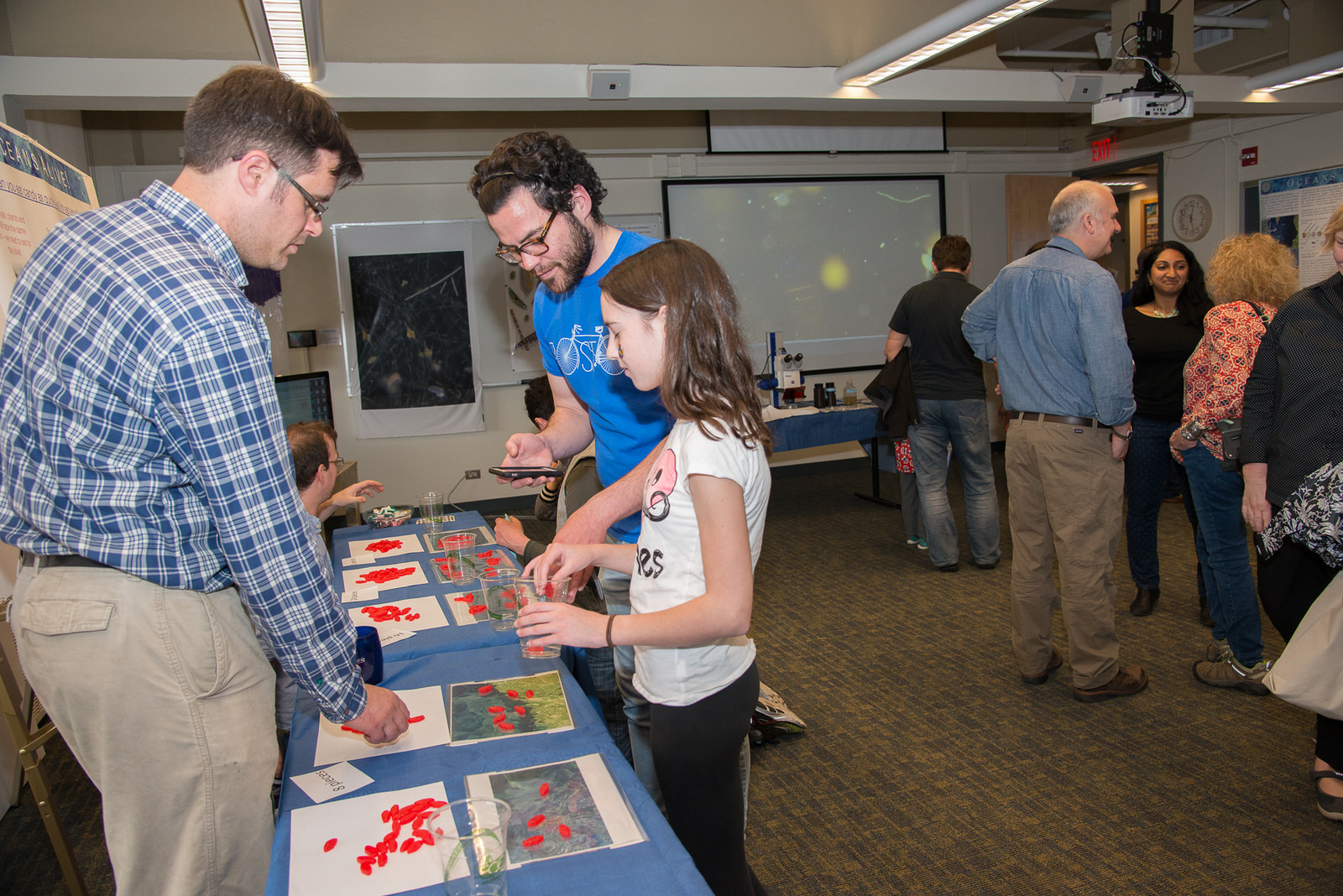 The Importance of Collaboration
The Importance of Collaboration
The benefits of scientist interactions extend beyond interactions with general public to peer-to-peer relationships. Events like science festivals can bring together researchers with varying interests, backgrounds and institutional affiliations, helping to foster unlikely collaborations. This interconnectivity can untether them from conventional ideas, broadening thought. However, this is a long-term consequence.
But there is potential for an immediate payoff—a direct exchange of knowledge and information between colleagues. Talmy recalls receiving a challenging line of questioning about El Nino’s winds and their effect on velocity of the surface ocean, and how Anne Willem Omta, an EAPS research scientist in ocean biogeochemistry, was able to step in and address the inquiry more completely. In this way, researcher proximity afforded at the science festival helped to strengthen personal knowledge. Furthermore, it can act as an idea incubator, prompting new ways of thinking that could be used to inform future research or outreach. “That interdisciplinary component was really great. That’s probably the most surprising thing for me—the amount that I learned about things not related [directly, but tangentially] to my own research,” Talmy said.
The Value of Art in Outreach
The incorporation of art into science takes this collaborative element one step further, adding another lens through which to understand climate science.
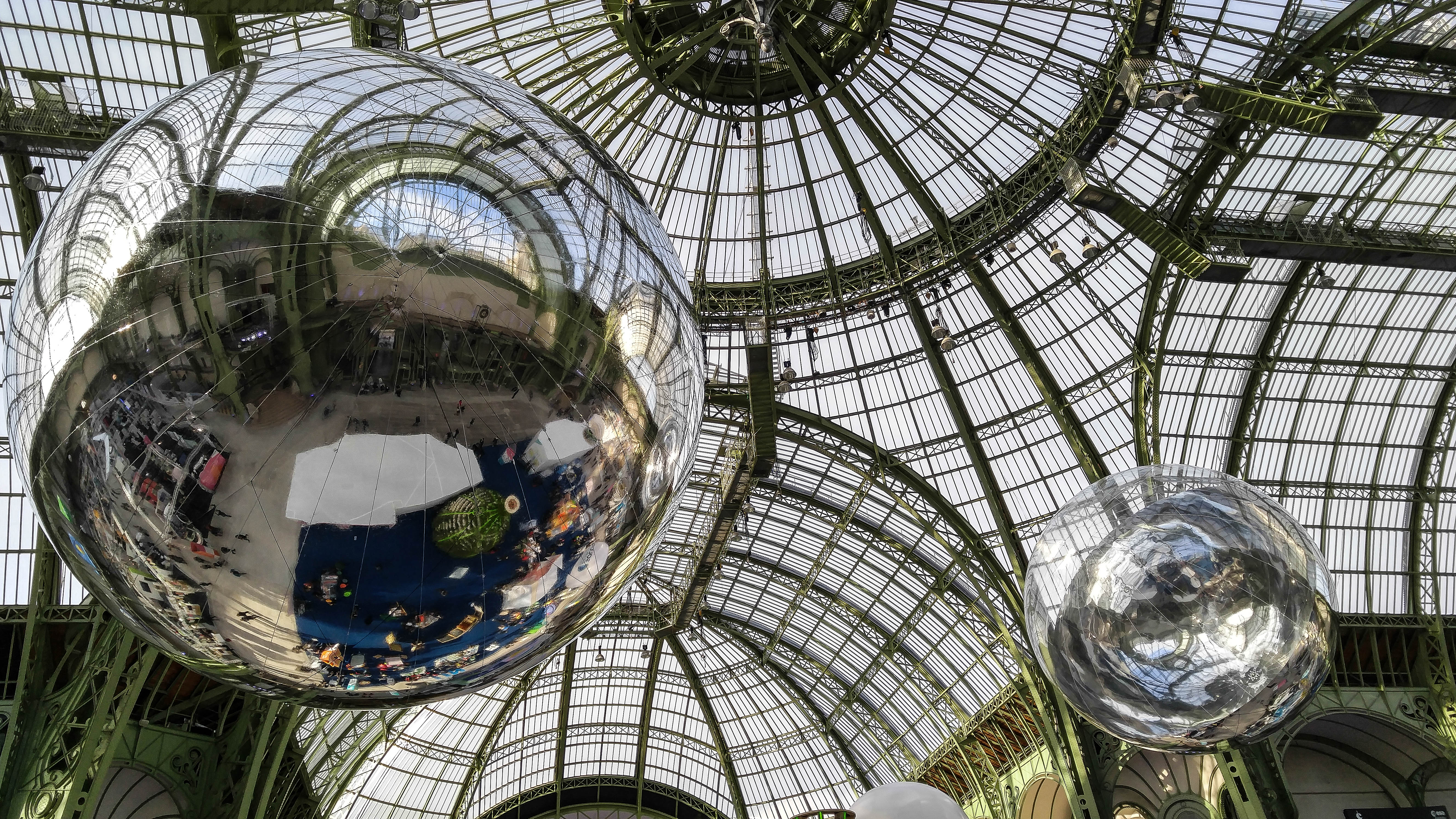 Aerocene, climate-conscious sculptures of orbs floating in the stratosphere, is a project doing just that. Born out of a collaboration between MIT Visiting Artist Tomás Saraceno, MIT EAPS meteorologist Lodovica Illari and research associate Bill McKenna, and Leila Kinney, Executive Director of the MIT Center for Art, Science & Technology (CAST), Aerocene fuses seemingly disparate focuses of design and climate study into a cohesive vision: to draw attentions to the environment and how humans are influencing it through air pollution and carbon emissions.
Aerocene, climate-conscious sculptures of orbs floating in the stratosphere, is a project doing just that. Born out of a collaboration between MIT Visiting Artist Tomás Saraceno, MIT EAPS meteorologist Lodovica Illari and research associate Bill McKenna, and Leila Kinney, Executive Director of the MIT Center for Art, Science & Technology (CAST), Aerocene fuses seemingly disparate focuses of design and climate study into a cohesive vision: to draw attentions to the environment and how humans are influencing it through air pollution and carbon emissions.
But, an obstacle to holding society’s focus there is climate science’s esoteric nature. Its study relies on the consideration of many different and possibly confounding parameters, any one of which could undergo a slight modification, with ramifications ranging from innocuous to a global calamity. Further, nuanced data, model biases and occasionally a newly-proposed variable are just some factors that govern these complex outcomes. On their own, these characteristics can make climate science academic and exclusionary. But art, at science festivals, can help mediate this. Its integration has the ability to pluck the research from the ivory tower and transplant it in a different framework. From here, art can translate the research in ways that add extrinsic value, such as cultural significance, increasing accessibility and offering another reason for personal investment.
aerosolar airlines : jet stream travel to COP21 from Weather in a Tank on Vimeo.
“Art gives [climate] reality context. People can immediately become interested in it and [through science visualization], see something in it for themselves.” explained Bill McKenna.
To begin breaking down this barrier, Saraceno imagines an epoch beyond the current proposed Anthropocene, which he’s called Aerocene. Where the Anthropocene’s defining feature is humanity’s significant impact on Earth’s climate and biodiversity, this new era centers around the need for global zero emissions. It hones in on the issue of pollution from air transportation, with which many are already familiar.
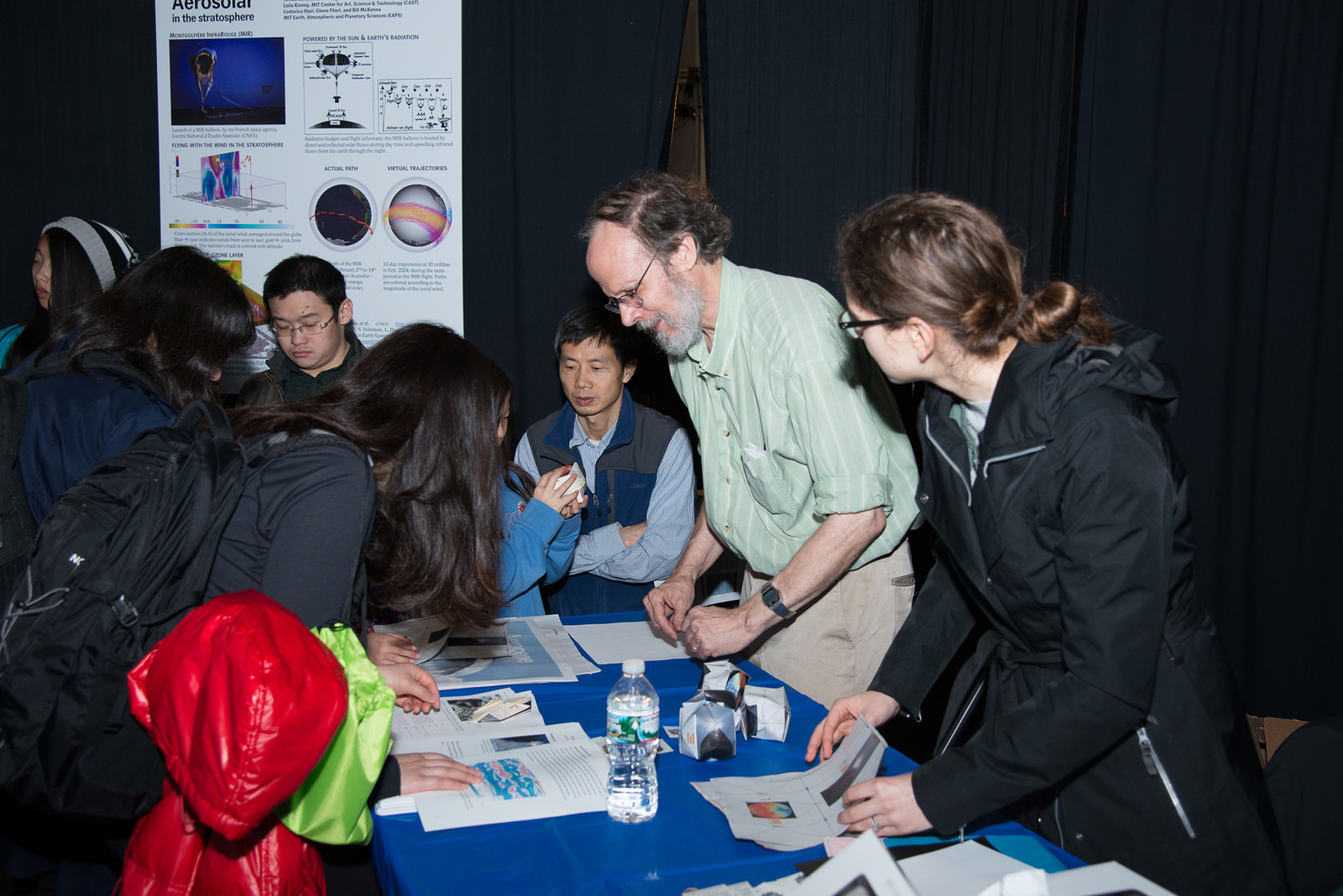 One strategy that the artist and the MIT group have employed to address this is the prospect of going “aerosolar”. Here, they envision that air transportation is based on balloon technology, but instead of using fossil fuel consumption to stay afloat, the craft relies on infrared/solar radiation from the sun during the day and the Earth at night. The vessel then circumnavigates the globe on winds in the troposphere and stratosphere. The concept was originally inspired by Montgolfière Infrarouge (MIR), solar balloons flights developed in the 1970’s by France’s Centre National d’Études Spatiales (CNES). Now, the collaboration with Illari’s group has helped the project mature. Using principles of fluid dynamics and data analysis from past MIR flights, Saraceno, Illari and McKenna envision a new generation of solar balloons that could monitor chemicals in the stratosphere and their effect on climate change. One can imagine a fleet of balloons floating around in the atmosphere collecting and transmitting data to Earth. Additionally, there is an opportunity for citizen science in the form of an interface through which the public can monitor realtime atmospheric conditions around their local balloon and how that plays into the regional effects of climate change.
One strategy that the artist and the MIT group have employed to address this is the prospect of going “aerosolar”. Here, they envision that air transportation is based on balloon technology, but instead of using fossil fuel consumption to stay afloat, the craft relies on infrared/solar radiation from the sun during the day and the Earth at night. The vessel then circumnavigates the globe on winds in the troposphere and stratosphere. The concept was originally inspired by Montgolfière Infrarouge (MIR), solar balloons flights developed in the 1970’s by France’s Centre National d’Études Spatiales (CNES). Now, the collaboration with Illari’s group has helped the project mature. Using principles of fluid dynamics and data analysis from past MIR flights, Saraceno, Illari and McKenna envision a new generation of solar balloons that could monitor chemicals in the stratosphere and their effect on climate change. One can imagine a fleet of balloons floating around in the atmosphere collecting and transmitting data to Earth. Additionally, there is an opportunity for citizen science in the form of an interface through which the public can monitor realtime atmospheric conditions around their local balloon and how that plays into the regional effects of climate change.
While the Aerocene group ultimately has their sights set on the future and the skies, they have been working to increase the project’s public visibility on the ground. The Aerocene project featured at the Grand Palais in Paris for COP21 this past December and recently at MIT’s Open House. Here, MIT’s Illari, McKenna and oceanographer Glenn Flierl used a multifaceted approach to bring the “aerosolar” concept to life for the Boston community.
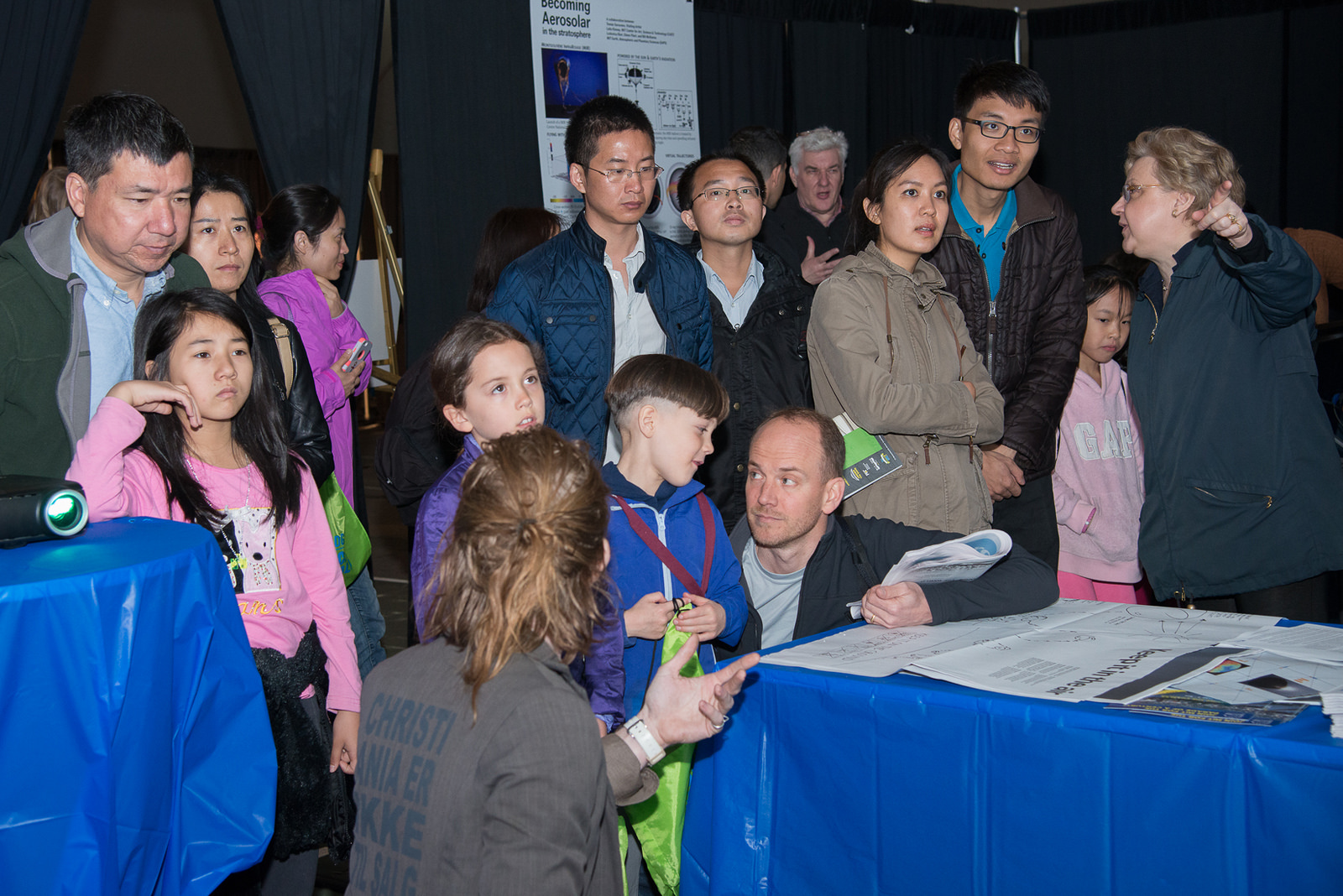
Together, they built the idea of going “aerosolar” from the ground up for MIT’s Open House attendees. The MIT group invited guests to first touch samples of the Aerocene balloons’ silver and transparent Mylar material. In this way, they could literally get a feel for the balloon’s structure and how it could trap heat energy, keeping it up. In the background, a looping video displayed Saraceno and friends inflating and releasing a balloon, actualizing the “aerosolar” notion. McKenna provided supplementary explanations for what the visitors were seeing and experiencing—how a simple Mylar structure could remain buoyant in a sea of air for long periods of time. It’s at this point that McKenna recalls how art influences initial public reception of Aerocene’s climate science components. “It’s a connection to action and to the human sensibility. In some ways that’s more tangible than the atmospheric data can sometimes be,” he said. Using this method, the artistic element of Aerocene directs guests’ focus to point locations in time and physical space. They can then imagine the forces on that spot and how it will likely react. “And that makes it [Aerocene] kind of visceral in a cool way and accessible.”
The next layer examined Aerocene from a global perspective. MIT’s Illari, Flierl, oceanographer John Marshall and graduate student Madeleine Youngs assisted Open House guests as they planned virtual balloon trajectories around the Earth. Using Flierl’s software with the iGlobe–a physical sphere that can project weather and climate simulations–guests could launch a virtual balloon that simulated flight under real-world conditions. The visualizations allowed the public to think about the Aerocene project in terms of an interactive fluid interface—when a balloon is launched from a specific location, it will follow the wind currents.
 The analogy is akin to dropping a particle onto the surface of water—the balloon will float on the top of the troposphere, bordering on the stratosphere—where some of the effects of climate change are being felt—and follow the jet stream. As Illari described, this exercise helped to lock-in guests’, “point of subjectivity” regarding climate science and how they understood it. Furthermore, “To be able to interact with the display and choose the location to launch the virtual balloon’s trajectory was very satisfying for the audience, especially for the children,” said Illari. “[For them] it became more interesting than a computer game!”
The analogy is akin to dropping a particle onto the surface of water—the balloon will float on the top of the troposphere, bordering on the stratosphere—where some of the effects of climate change are being felt—and follow the jet stream. As Illari described, this exercise helped to lock-in guests’, “point of subjectivity” regarding climate science and how they understood it. Furthermore, “To be able to interact with the display and choose the location to launch the virtual balloon’s trajectory was very satisfying for the audience, especially for the children,” said Illari. “[For them] it became more interesting than a computer game!”
During the exhibit, McKenna took notice of how this awareness of climate science and its impacts was forming in children. “You could tell that a concept was being stored in their mind like, oh, that's something that's possible (“aerosolar” flight). Kids are still scoping out that field [of climate science] and mapping things to names, so the idea of being able to fly with just the sun or with the heat of the Earth sounds pretty wild.” But art has the ability to shed light on the imperceptible, making it visible and tangible, and so in the realm of climate science, “the dream-to-reality space [grows] a little closer.”